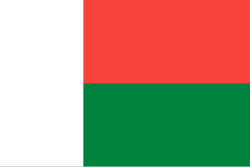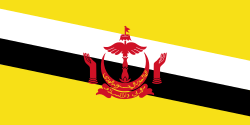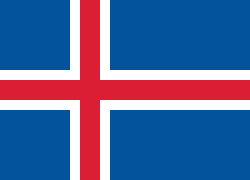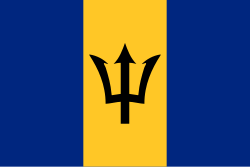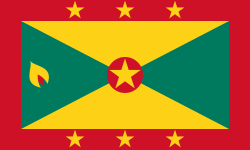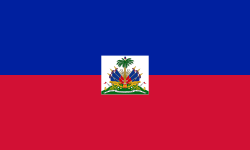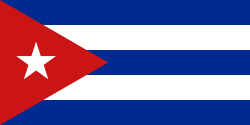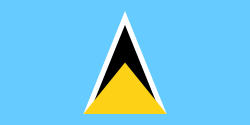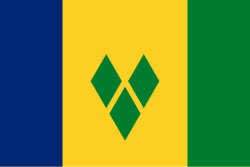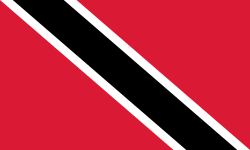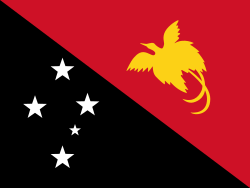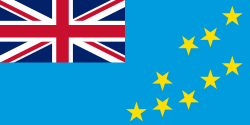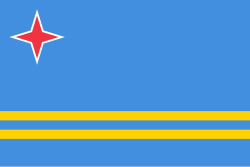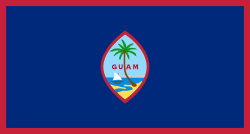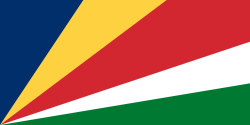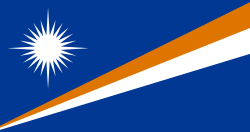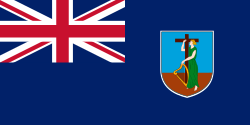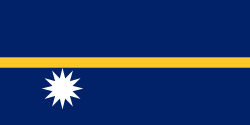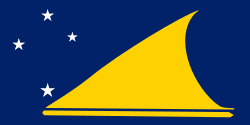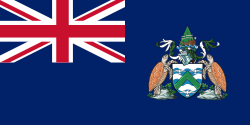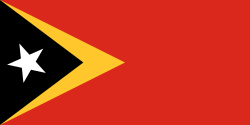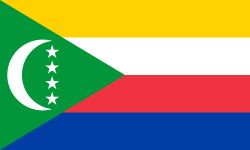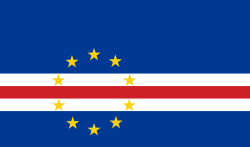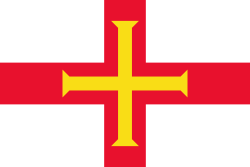Ostrovní stát

Ostrovní stát je takový stát, který se celý nachází na pevnině menší než kontinent, obklopené vodní plochou. Některé ostrovní státy se rozkládají na rozlehlých souostrovích (např. Filipíny, Federativní státy Mikronésie či Indonésie), jiné jsou tvořeny jediným ostrovem (např. Nauru), jiné zabírají jen část ostrova (např. Haiti, Dominikánská republika či Východní Timor), další jsou tvořeny jedním hlavním ostrovem s menšími ostrůvky kolem něj (Kuba, Island, Jamajka). Většina ostrovních států je spíše drobná, existují však i velké a lidnaté ostrovní státy s desítkami až stovkami milionů obyvatel (Indonésie, Japonsko, Filipíny, Spojené království).
Zvláštní případy
![]() Austrálie nemá suchozemskou hranici se žádnou jinou zemí, takže prakticky má charakter ostrovního státu, ale hlavní australská pevnina se nepovažuje za ostrov, ale za kontinent.
Austrálie nemá suchozemskou hranici se žádnou jinou zemí, takže prakticky má charakter ostrovního státu, ale hlavní australská pevnina se nepovažuje za ostrov, ale za kontinent.
Některé státy nejsou sice ostrovní, ale přesto se na ostrově či ostrovech nachází jejich podstatná část (např. Malajsie), nebo dokonce hlavní město (Dánsko, Rovníková Guinea).
Sultanát Brunej je ostrovní, ale má charakter spíše jen státu přímořského, neboť se nachází na pobřeží mnohem většího ostrova Borneo.
Přehled ostrovních států
V srpnu 2013 existovalo na světě 193 nezávislých států, které byly členskými státy OSN. Z těchto 193 entit se jich 46 počítalo mezi ostrovní státy (necelých 25 % všech států světa). Nejvíce se vyskytují v oblasti Karibiku (tzv. Západní Indie) a v západním Pacifiku (Oceánie a jihovýchodní Asie).
* – má suchozemskou hranici s jiným státem
** – má suchozemskou státní hranici de facto (s neuznaným Severním Kyprem)
Ostrovními státy jsou i ![]() Čínská republika na ostrově Tchaj-wan a
Čínská republika na ostrově Tchaj-wan a ![]() Severokyperská turecká republika na ostrově Kypr, které jsou jen částečně uznány jako nezávislé státy.
Severokyperská turecká republika na ostrově Kypr, které jsou jen částečně uznány jako nezávislé státy.
Ostrovní závislá území
Většina závislých území na světě se nachází na ostrovech či souostroví (francouzské zámořské regiony a společenství, britská zámořská území a korunní dependence, dánské autonomní oblasti, konstituční země nizozemského království, australská či americká zámořská území apod.). Často se jedná o území s mírou samosprávy blížící se suverenitě, viz přehled níže. Přehled zahrnuje i některá autonomní území či regiony, které jsou plně integrální součástí příslušného státu, ale geograficky jsou od něj vzdálené.
Evropa a severní Atlantik
Jižní Atlantik
 Falklandy
Falklandy Jižní Georgie a Jižní Sandwichovy ostrovy
Jižní Georgie a Jižní Sandwichovy ostrovy Svatá Helena, Ascension a Tristan da Cunha
Svatá Helena, Ascension a Tristan da Cunha Bouvetův ostrov
Bouvetův ostrov
Karibik
 Americké Panenské ostrovy
Americké Panenské ostrovy Anguilla
Anguilla Aruba
Aruba Britské Panenské ostrovy
Britské Panenské ostrovy Curaçao
Curaçao Guadeloupe
Guadeloupe Kajmanské ostrovy
Kajmanské ostrovy Karibské Nizozemsko
Karibské Nizozemsko Montserrat
Montserrat Martinik
Martinik Portoriko
Portoriko Svatý Bartoloměj
Svatý Bartoloměj Svatý Martin (francouzská část)*
Svatý Martin (francouzská část)* Svatý Martin (nizozemská část)*
Svatý Martin (nizozemská část)* Turks a Caicos
Turks a Caicos
Indický oceán
Tichý oceán
*** – formálně zahrnují i část antarktické pevniny, ta ale fakticky není závislým, ale neutrálním, resp. nadnárodním územím
Externí odkazy
 Obrázky, zvuky či videa k tématu ostrovní stát na Wikimedia Commons
Obrázky, zvuky či videa k tématu ostrovní stát na Wikimedia Commons
Média použitá na této stránce
Flag of Australia, when congruence with this colour chart is required (i.e. when a "less bright" version is needed).
See Flag of Australia.svg for main file information.bendera Indonesia
Zelený pruh má znázorňovat většinové katolické obyvatelsto Irska, oranžový pruh reprezentuje protestantskou menšinu a bílý pruh uprostřed znázorňuje mír a harmonii mezi nimi.
The Flag of Iceland.
- Horizontal aspect ratio: 7:1:2:1:14;
- Vertical aspect ratio: 7:1:2:1:7.
The flag of the Dominican Republic has a centered white cross that extends to the edges. This emblem is similar to the flag design and shows a bible, a cross of gold and 6 Dominican flags. There are branches of olive and palm around the shield and above on the ribbon is the motto "Dios,Patria!, Libertad" ("God, Country, Freedom") and to amiable freedom. The blue is said to stand for liberty, red for the fire and blood of the independence struggle and the white cross symbolized that God has not forgotten his people. "Republica Dominicana". The Dominican flag was designed by Juan Pablo Duarte, father of the national Independence of Dominican Republic. The first dominican flag was sewn by a young lady named Concepción Bona, who lived across the street of El Baluarte, monument where the patriots gathered to fight for the independence, the night of February 27th, 1844. Concepción Bona was helped by her first cousin María de Jesús Pina.
The flag of the Dominican Republic has a centered white cross that extends to the edges. This emblem is similar to the flag design and shows a bible, a cross of gold and 6 Dominican flags. There are branches of olive and palm around the shield and above on the ribbon is the motto "Dios,Patria!, Libertad" ("God, Country, Freedom") and to amiable freedom. The blue is said to stand for liberty, red for the fire and blood of the independence struggle and the white cross symbolized that God has not forgotten his people. "Republica Dominicana". The Dominican flag was designed by Juan Pablo Duarte, father of the national Independence of Dominican Republic. The first dominican flag was sewn by a young lady named Concepción Bona, who lived across the street of El Baluarte, monument where the patriots gathered to fight for the independence, the night of February 27th, 1844. Concepción Bona was helped by her first cousin María de Jesús Pina.
The national and official state flag of Haiti; arms obtained from File:Coat of arms of Haiti.svg. The civil flag can be found at here.
Flag of Jamaica. “The sunshine, the land is green, and the people are strong and bold” is the symbolism of the colours of the flag. GOLD represents the natural wealth and beauty of sunlight; GREEN represents hope and agricultural resources; BLACK represents the strength and creativity of the people. The original symbolism, however, was "Hardships there are, but the land is green, and the sun shineth", where BLACK represented the hardships being faced.
The flag of Aruba
The flag of Curaçao is a blue field with a horizontal yellow stripe slightly below the midline and two white, five-pointed stars in the canton. The geometry and colors are according to the description at Flags of the World.
The flag of Guam, courtesy an e-mail from the author of xrmap. Modifications by Denelson83.
Flag of the Turks and Caicos Islands
Flago de la Kokosinsuloj, uzo ne oficiala
The national flag of Nauru. Pantone 280c (Blue) and Pantone 123c (Yellow). On Pantone's official website these colours have the hexadecimal codes of #012169 and #FFC72C.
Coat of arms of the Governor of Svalbard pre 01.07.2021.
Island_nation
Flag of Anguilla, adopted on 30 May 1990 and modified slightly on 25 January 1999.
The flag of the Pitcairn Islands, arms courtesy an e-mail from the author of xrmap and the Blue Ensign from Image:Government Ensign of the United Kingdom.svg
Drapeaux de la France et de la Nouvelle-Calédonie côte-à-côte.
Flag of Ascension Island
Flag of Maldives. The colours used are Pantone 186 C for red and Pantone 348 C for green.
Flag of São Tomé and Príncipe
Bandera de la Isla de Pascua/Easter Island/Rapa Nui flag, a red Rei Miru on a white background
Flag of the en:French Southern and Antarctic Lands, official since 23 February 2007

